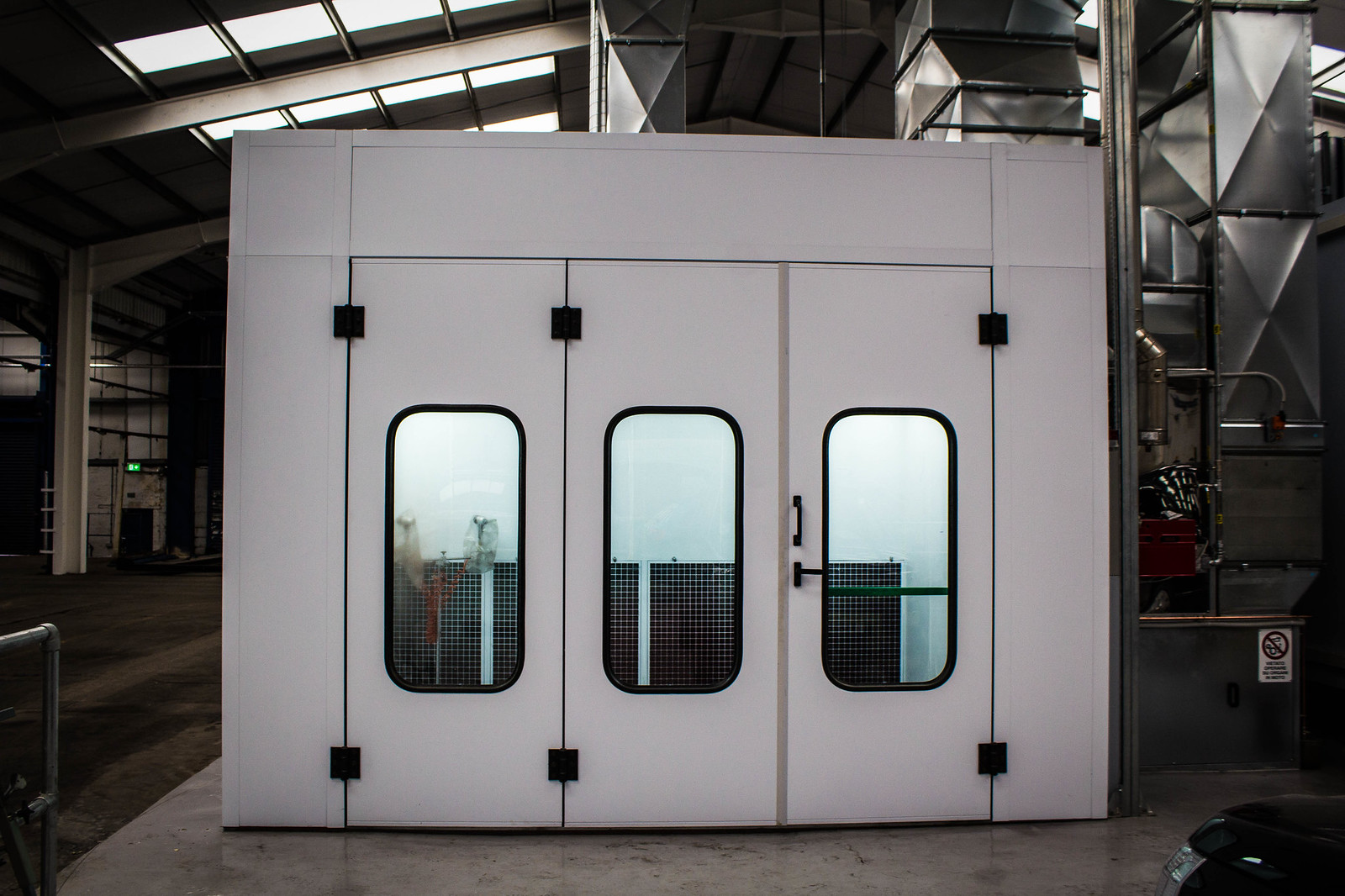If you’re thinking about building a paint booth, did you know that a properly designed booth can reduce the chances of overspray by up to 98%?
Before you jump into the construction process, it’s important to understand the key components that will guarantee a successful outcome.
From choosing the right materials to setting up an efficient ventilation system, each step plays an essential role in creating a functional and safe workspace for your painting projects.
So, let’s explore the essential steps and considerations involved in constructing your own paint booth.
Materials and Tools Needed
To effectively build a paint booth, you’ll need specific materials and tools that are essential for the construction process.
For the frame structure of the paint booth, PVC pipes and connectors are important components. These will provide the skeleton on which the plastic sheeting will be draped.
Use a PVC saw or pipe cutter to guarantee precise cutting of the pipes to the required lengths. Seal the plastic sheeting to the frame using tape or clamps, ensuring a tight and secure fit.
A box fan is necessary for creating ventilation within the paint booth.
Additionally, filters can be attached to the fan to guarantee that air circulating within the booth is clean and free of contaminants.
Safety is paramount, so wearing a respirator with goggles is recommended to protect yourself from fumes and particles.
Proper sealing techniques, such as grounding the plastic sheets, are crucial to prevent static electricity buildup, ensuring a safe working environment.
Consider incorporating a ventilation system that includes brackets, PVC furniture fittings, and HVAC air filter brackets to enhance the efficiency of the paint booth setup.
Planning and Designing Your Booth
Begin by evaluating the available space in your garage and determining the required dimensions for your paint booth project.
Consider the size of the project and make sure the booth will fit comfortably within the designated area.
Calculate the necessary PVC pipe sections needed for the frame structure, making sure they’re sufficient to support the booth’s walls and ceiling. Cut the PVC pipes precisely to the required lengths using a PVC saw or pipe cutter for accurate assembly.
Assemble the frame by connecting the PVC pipes with connectors to guarantee stability and structural integrity. Include corner posts, top, middle, and side sections to enhance stability and support the booth structure.
To create walls, use plastic sheeting secured to the frame with duct tape.
Install furnace filters on one side of the booth to allow filtered air to enter, providing a clean air environment for painting.
This planning and design phase is important for a successful paint booth construction.
Constructing the Frame Structure
Evaluate the stability of the frame structure by ensuring all PVC pipes are securely connected with the appropriate connectors for reliable support.
Start by determining the required dimensions based on the project needs and available garage space.
Calculate and cut PVC pipes to the necessary lengths using a PVC saw or pipe cutter.
Assemble the frame by connecting PVC pipes with the appropriate connectors, ensuring a sturdy structure.
To enhance stability, add corner posts at key junctions and include top, middle, and side sections for reinforcement.
Check for balance and adjust any uneven sections to guarantee the frame’s stability. This step is important before proceeding with the installation of the enclosure walls.
By meticulously constructing the frame structure with precision and attention to detail, you lay a solid foundation for the paint booth assembly, ensuring it meets your project requirements efficiently.
Installing the Enclosure Walls
Secure the plastic sheeting tightly around the PVC frame using tape or clamps to enclose the paint booth. Assure the plastic sheeting covers the entire frame, creating a tight fit to maintain a controlled environment inside the booth.
Smooth out any wrinkles in the plastic for a professional finish. Remember to leave an opening for entry and exit purposes while keeping the booth fully enclosed during painting.
For the back wall, consider installing box fans to create positive pressure inside the booth, pushing out overspray and fumes.
To introduce fresh air, you can use cardboard boxes to direct airflow. Tape the edges securely to prevent any air leaks.
Setting Up Proper Ventilation
To optimize the safety and efficiency of your paint booth, ensuring proper ventilation is paramount in maintaining a healthy work environment free of hazardous fumes and particles.
A well-designed ventilation system is essential to remove fumes and overspray effectively. Adequate airflow within the booth is vital to prevent the buildup of flammable vapors, thereby reducing fire hazards.
By maintaining proper ventilation, you not only enhance air quality but also minimize health risks associated with inhaling paint particles and chemicals.
To set up proper ventilation, it’s imperative to install a ventilation system that meets safety regulations and standards.
Regularly inspect and test the ventilation system to make sure it’s efficiently removing fumes and keeping a safe working environment.
Proper ventilation not only safeguards against fire hazards but also contributes to the overall well-being of individuals working in the paint booth.
Remember, compliance with safety regulations is essential for the longevity of your booth and the health of those using it.
Conclusion
To sum up, building a paint booth requires careful planning, precise construction, and attention to safety measures.
By following the steps outlined in this guide, you can create a functional and efficient workspace for your painting projects.
Remember to test the booth before use and always prioritize safety by wearing protective gear.
With the right materials and tools, you can enjoy a professional-quality painting environment right in your own garage.


Leave a Reply